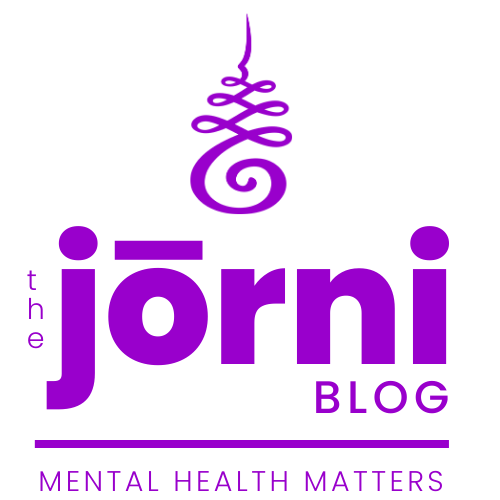The Body’s Cosmic Blueprint
The body moves through time with precision, regulating breath, heartbeat, digestion, and energy cycles. Every function follows a rhythm, adjusting to external forces like light and temperature while maintaining its own internal clock. These cycles influence how the body heals, how emotions shift, and how energy flows from moment to moment. But beneath the familiar rhythms of sleep and metabolism lies something much older. Something written into the body’s very structure.
Ancient medical traditions understood that the human body reflects the universe. Ayurveda, Traditional Chinese Medicine, and medical astrology mapped the body according to planetary alignments, recognizing that the same forces shaping the cosmos also influence physical and emotional wellbeing. These teachings align with modern discoveries about time perception, nervous system regulation, and the deep connection between biological rhythms and external cycles. The body is not separate from the universe. It moves in time with it.
Understanding this connection offers a different perspective on health. The structure of the body itself mirrors the Zodiac, forming an internal celestial map that holds the key to alignment, balance, and healing. When these natural rhythms are disrupted through stress, trauma, or misalignment the body struggles to regulate itself. Restoring harmony means working with these patterns, not against them.
Decoding the Body’s Cosmic Blueprint
Melanie Weller has spent over thirty years at the intersection of physical therapy, biomechanics, and nervous system regulation, uncovering how the body’s structure mirrors the Zodiac and celestial cycles. Her work challenges conventional views of health by revealing the direct relationship between planetary movement, anatomical function, and time perception.

Now, through Heretical Healing, Melanie teaches individuals and practitioners how to restore these rhythms using a combination of scientific principles and ancient wisdom. Her work proves that healing is not about isolated symptoms—it is about resetting the body’s connection to time, movement, and universal cycles, allowing for transformation on every level.
How the Body Interprets Planetary Movement
The body is not only structured in alignment with the Zodiac. It also reacts to the movement of planets and celestial cycles. The sun, moon, and planets influence biological rhythms in ways that science is only beginning to understand. Ancient traditions have long worked with these cycles, recognizing that planetary shifts correspond with changes in mood, sleep, digestion, and energy levels.
The lunar cycle affects hormonal fluctuations, water retention, and emotional processing, just as it moves the tides. The sun’s position impacts circadian rhythms, determining when the body feels most alert and when rest is needed. Even planetary retrogrades, the times when planets appear to move backward in the sky, correlate with neurological and psychological shifts, often bringing a sense of stagnation or internal reassessment.

Working with these planetary rhythms rather than resisting them allows the body to move through expansion, contraction, rest, and renewal more efficiently. Understanding personal cycles within these larger cosmic shifts provides insight into when to push forward, when to pause, and how to realign when life feels out of sync.
The Zodiac CLOCK
Every region of the body corresponds to a specific astrological sign, creating a structural relationship between human anatomy and the celestial sky. This framework has been referenced for centuries in various healing systems, offering insight into how physical alignment, emotional health, and planetary cycles are connected.
Aries and the Head
Aries rules the head, and its symbol, the ram, appears in the shape of the brain’s ventricles, which form two curved, horn-like structures. This region governs cognition, coordination, and nervous system function. When stress builds in this area, it can lead to headaches, dizziness, or mental fog. Aligning the head’s positioning and releasing tension from the upper spine supports clear thinking, balanced energy, and mental resilience.
Taurus and the Throat
Taurus governs the throat, vocal cords, and thyroid, all of which influence communication, breath, and metabolic regulation. When tension builds in this area, it can lead to difficulty expressing emotions, irregular energy levels, and disrupted breathing patterns. Working with the throat’s natural rhythm through vocalization, breath control, and neck alignment strengthens both physical and emotional balance.

Leo and the Heart
Leo rules the heart and circulatory system, aligning with the body’s natural rhythms of expansion, contraction, and emotional expression. The shape of the heart reflects Leo’s symbol, reinforcing its link to vitality and courage. When the heart’s rhythm is disrupted, energy levels become unstable, and emotional processing slows. Supporting heart health through movement, breathwork, and emotional regulation restores balance and promotes resilience and joy.
The Full Zodiac Connection
Each region of the body carries the imprint of a celestial pattern, forming an interconnected system of cosmic influence and biological function. When one area falls out of alignment, the effects ripple through the entire system, disrupting physical health, emotional stability, and mental clarity. Restoring these rhythms supports a deeper level of healing, allowing the body to function in harmony with the natural cycles that shape life itself.
When the Body’s Clock Stops Moving
The body is designed to be in constant motion. At microscopic levels, cells renew, blood flows, and the nervous system shifts between states of activation and recovery. But when trauma, stress, or structural misalignment interrupts this process, the body’s perception of time freezes. This disruption creates a feedback loop that reinforces pain, fatigue, and emotional shutdown.

The Impact of Stagnation on Wellbeing
When the body’s internal clock stops functioning properly, the nervous system loses its ability to shift smoothly between states. Instead of moving through cycles of wakefulness and rest, stress and relaxation, the body becomes trapped in a chronic state of dysregulation. Sleep becomes inconsistent, digestion slows, and emotional responses feel unpredictable. This stagnation makes it difficult to heal, process stress, or regain energy.
How the Nervous System Holds Time
The nervous system processes more than sensory input. It also determines how time is experienced. When trauma occurs, the brain encodes it as a fixed point, making it feel like the past is still present. This creates a disconnect between the body’s actual state and its perception of reality. Resetting these internal rhythms allows the nervous system to recognize that the moment has passed, creating space for healing, release, and forward movement.

Reactivating the Body’s Natural Timing
Breathwork, movement, and structured physical alignment help reawaken the body’s natural timing. By restoring motion where stagnation has set in, the body begins to recalibrate itself, shifting out of survival mode and back into a state of balance. This process doesn’t force healing but allows it to happen naturally by removing the obstacles that have interrupted the body’s rhythm.
The Influence of Sound and Vibration on the Body’s Timing
The body is constantly responding to sound, rhythm, and frequency. Every cell vibrates at a specific rate, and external sound waves can shift neurological activity, nervous system function, and even physical alignment. The use of sound for healing has existed for thousands of years, from chanting in spiritual traditions to modern sound therapy techniques designed to reset brainwave states.
The vibration of the voice directly influences the throat, vagus nerve, and heart rhythm, making vocalization a powerful tool for regulating stress, improving focus, and balancing energy levels. Instruments like singing bowls, tuning forks, and even drumming patterns have been shown to entrain brainwaves, guiding the nervous system into states of relaxation or heightened awareness.

By understanding how sound and vibration interact with the body’s natural rhythms, deeper alignment can be achieved. Music, breath, and voice can be used as tools for resetting the body’s internal clock, improving mental clarity, and strengthening emotional stability.
The Spine as the Body’s Central Timekeeper
The spine does more than provide structural support and acts as the body’s primary channel for communication, timing, and energy flow. Every nerve that controls movement, sensation, digestion, and healing runs through the spinal column, making it the body’s central timekeeper. When the spine is in alignment, nervous system signals move freely, creating balance between action and recovery, stress and relaxation, wakefulness and sleep.
Tension or misalignment in the spine disrupts the body's natural timing, leading to brain fog, irregular digestion, chronic pain, and emotional dysregulation. These disruptions create a lag between what the body experiences and how it processes information, making it harder to respond to stress, regulate energy, or recover from injury. Many people unknowingly hold structural imbalances that keep their body stuck in old patterns of tension and survival mode.

Restoring movement and awareness to the spine helps reset the body’s perception of time, energy, and flow. Practices such as spinal mobility exercises, deep breathing, and postural realignment encourage the body to release stored tension and return to its natural rhythm. Working with the spine’s role as the body's central timekeeper improves mental clarity, physical stability, and emotional resilience, allowing the body to move in sync with its internal and external cycles.
The Role of Breath in Restoring Alignment
Breathing is one of the most powerful tools for resetting the body’s internal clock. The way breath moves through the body directly influences the nervous system, heart rate, and emotional processing. Shallow or irregular breathing patterns create stress and instability, while deep, rhythmic breathwork signals the body that it is safe to return to balance.
Breath and the Vagus Nerve
The vagus nerve connects the brain to major organs, regulating the shift between stress and relaxation. Slow, intentional breathing stimulates the vagus nerve, calming the nervous system and reducing tension, inflammation, and emotional reactivity.

Breathing and Digestive Rhythms
The digestive system follows its own clock, processing food most efficiently at certain times of day. Breath directly impacts this process, influencing gut motility, enzyme production, and nutrient absorption. Deep breathing before meals signals the parasympathetic nervous system to engage, improving digestion and energy levels.
Breathwork as a Tool for Emotional Processing
Emotions create physiological responses in the body, influencing heart rate, muscle tension, and respiratory patterns. Using breathwork to regulate these responses helps emotions move through the body rather than becoming trapped. This supports greater resilience, emotional clarity, and an improved ability to handle stress.
The TAKEAWAY
The body has never been random in its design. It carries the imprint of the universe, moving through time in ways that extend beyond physical function. These rhythms are deeply embedded in every cell, every breath, every pulse. When these cycles are honored, energy flows more freely, emotions settle, and healing happens without resistance. But when they are ignored, the body works against itself, struggling to keep up with an artificial pace that was never meant to be sustained.
There is no need to control time, fight against exhaustion, or force the body into submission. Health is not achieved through sheer willpower, but through alignment and recognizing where the body’s timing has been thrown off and making space for realignment. The body is not failing when fatigue, stress, or imbalance appear. It is signaling that something has drifted out of sync, that its natural timing has been disrupted. The real work is not to suppress these signals, but to listen to what they are trying to reveal.

The body already knows how to move, how to heal, how to exist in balance. The rhythms are still there, beneath the noise of daily stress, waiting to be reclaimed. Tuning back into these cycles is not about doing more, but about undoing the patterns that have pulled us away from our natural state. The body is not lost.


